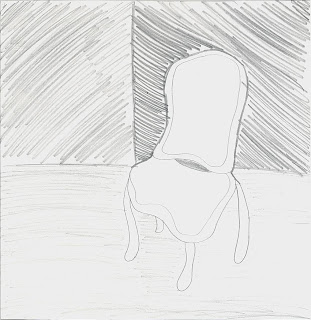Concept Statement: This design
was based on the Romanesque style, and is comprised of images of Ancient Roman
coins, tapestries, stained glass, and arches. The color harmony used was bright
colors reminiscent of the era, such as reds, golds, blues, and greens. These assist in keeping the pattern seem as if
it is from the Roman era, and the colors all work together and blend well. The contrast is also evident in the way that there
are reds, greens, and blues on the textile, which are opposite one another on
the color wheel. The borders are
horizontal and vertical, and the difference in opacity with the middle element
also helps with contrast. The textile
seeks to incorporate unity and balance, with the outer borders connecting the
print to the middle picture. The small pictures in the corners also offset the
large image in the center. Overall, the
colors and placement of the images seek to encompass the overall style from the
Romanesque period.
Reflection: This image is composed of pictures reminiscent to the Romanesque time period. The border is comprised of typical Roman patterns, along with Roman coins and an archway. The middle image is of a stained glass window combined with an image of a Roman painting. I liked this design because of the way that the patten turned out when it was put together. I also liked the colors used, and how they work well together. My skills in being able to manipulate Photoshop images have grown, along with how to manipulate images using InDesign. Overall, making this design was a fun process and I was able to expand my knowledge to create a unique design.
Reflection: This image is composed of pictures reminiscent to the Romanesque time period. The border is comprised of typical Roman patterns, along with Roman coins and an archway. The middle image is of a stained glass window combined with an image of a Roman painting. I liked this design because of the way that the patten turned out when it was put together. I also liked the colors used, and how they work well together. My skills in being able to manipulate Photoshop images have grown, along with how to manipulate images using InDesign. Overall, making this design was a fun process and I was able to expand my knowledge to create a unique design.











